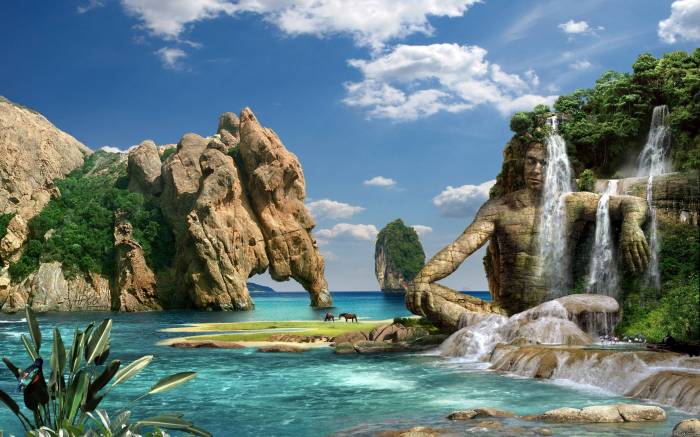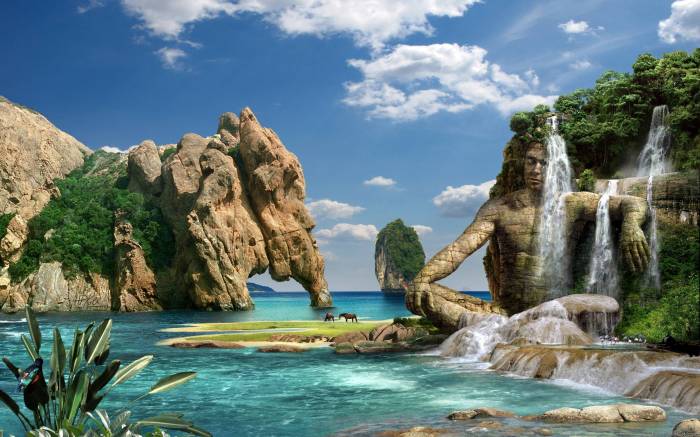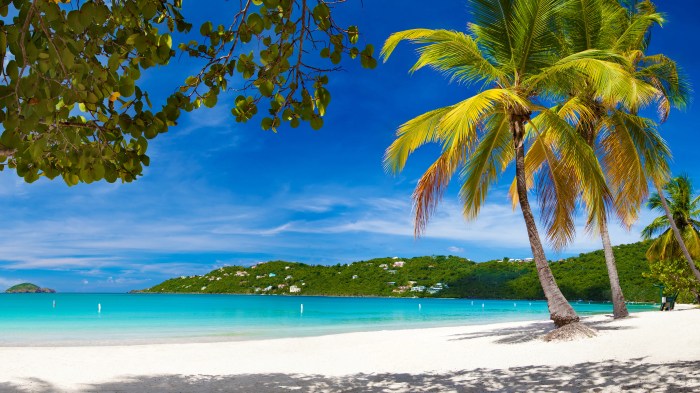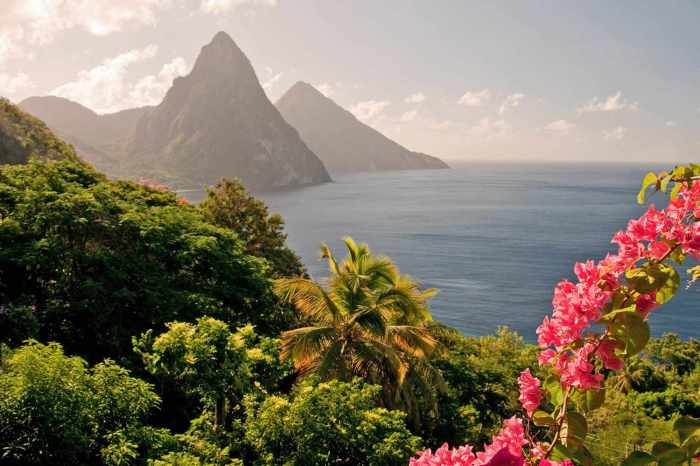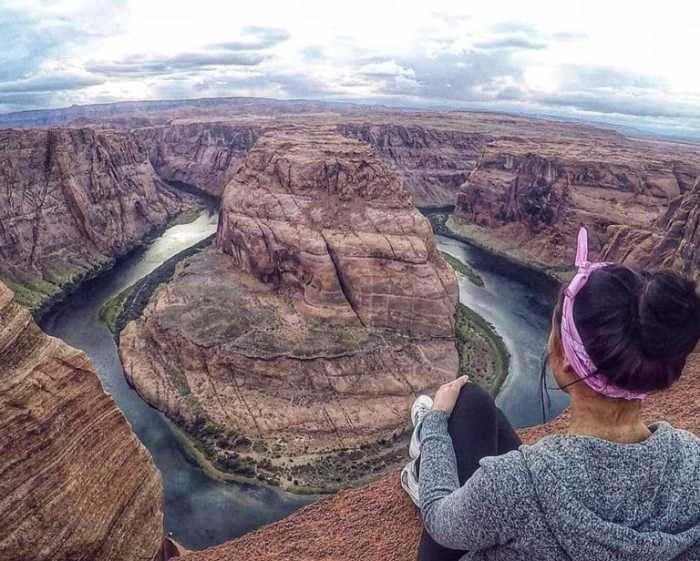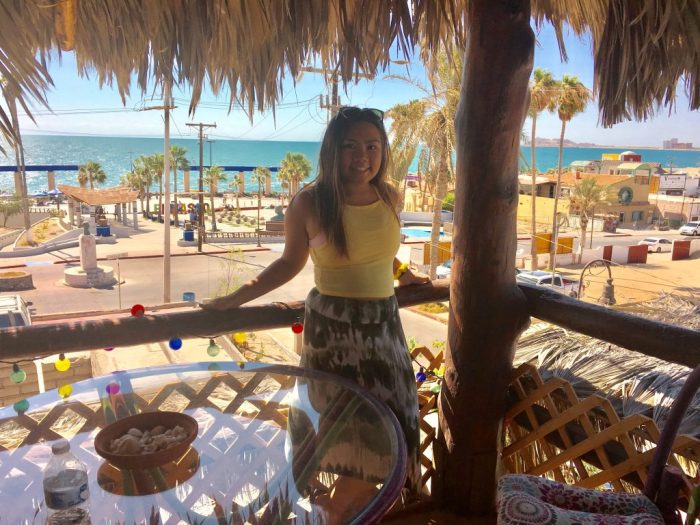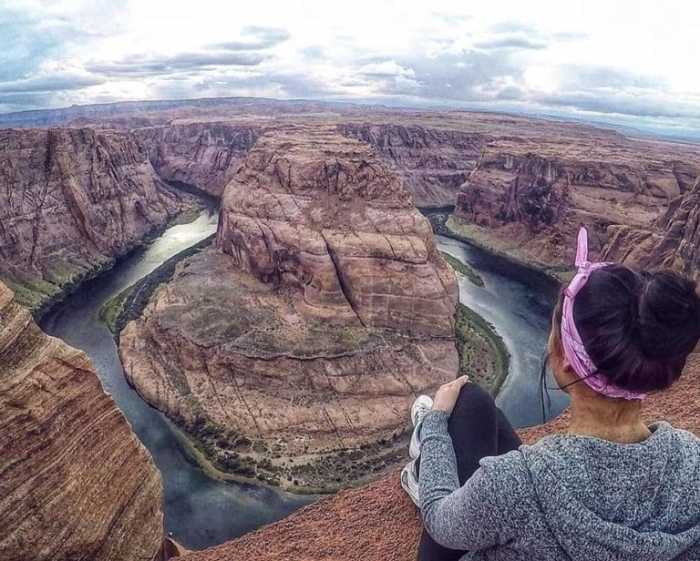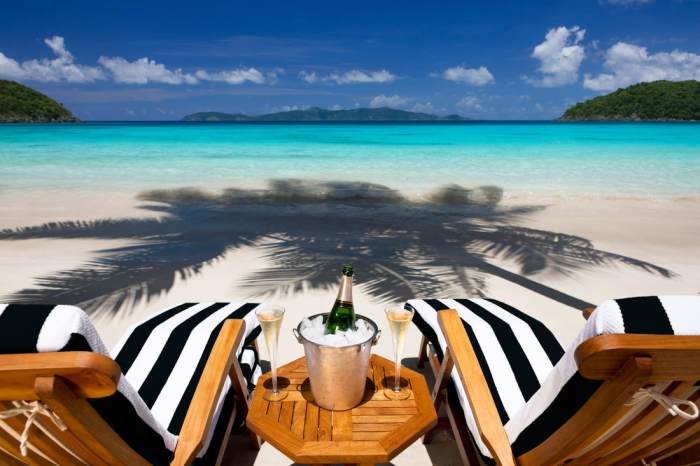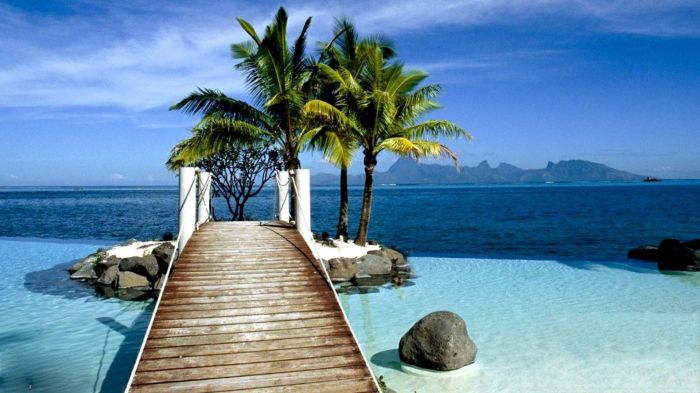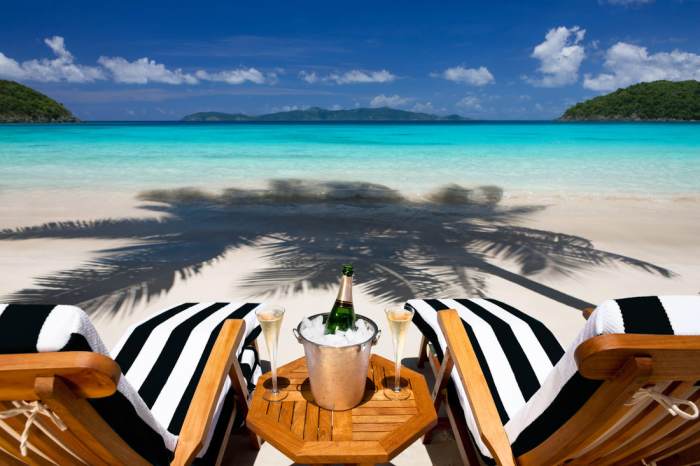Zagreb Croatia where to eat? This comprehensive guide dives deep into the culinary scene, offering a feast for the senses and a satisfying exploration of Zagreb’s diverse dining options. From traditional Croatian Konobas to international delights and budget-friendly gems, discover hidden culinary treasures and unforgettable dining experiences across the city.
We’ll explore the city’s neighborhoods, uncovering the unique character of each culinary district, and provide insights into everything from popular chains to local favorites. Whether you’re seeking a romantic dinner, a casual meal with friends, or a budget-friendly adventure, this guide has something for every palate and preference.
Restaurant Types in Zagreb
Zagreb boasts a vibrant culinary scene, catering to diverse palates and preferences. From traditional Croatian fare to international cuisines, the city offers a rich tapestry of dining experiences. Exploring these options allows for a deeper understanding of the city’s culture and the unique flavors it embraces.
Traditional Croatian Cuisine
Traditional Croatian cuisine, rooted in the country’s history and agricultural heritage, is a highlight of Zagreb’s dining landscape. These restaurants, often known as “konobas” or “restorani,” typically feature hearty dishes emphasizing fresh, local ingredients. The atmosphere is generally casual and welcoming, with a focus on shared meals and convivial interaction. Prices are generally mid-range, making them accessible to a broad spectrum of diners.
- Konobas are often family-run establishments that offer a warm and authentic experience. They frequently feature platters of grilled meats, hearty stews, and fresh fish, showcasing regional specialties.
- Popular dishes include “štruklji” (savory pastries), “pašticada” (beef stew), “pršut” (smoked ham), and “riblji paprikaš” (fish paprika stew). These dishes are often accompanied by traditional Croatian wines.
- Local favorites include Konoba Kasa, known for its rustic ambiance and delicious home-style cooking, and Konoba Ivan, which prides itself on using seasonal produce and traditional recipes.
International Cuisine
Zagreb offers a wide array of international dining options, allowing visitors to savor flavors from around the globe. These restaurants vary significantly in atmosphere and pricing, from upscale, fine-dining experiences to more casual cafes.
- International restaurants cater to a variety of tastes, providing options for everything from Italian pasta to French pastries to Asian noodles. These restaurants often have a more contemporary and sophisticated atmosphere, though some are casual.
- Pricing in these restaurants can range from mid-range to high-end, depending on the specific restaurant and the cuisine offered. Expect a wider array of dishes and international wine options, often with detailed menus in multiple languages.
- Popular chains such as McDonald’s and Domino’s Pizza provide convenient options for quick meals, while local favorites such as Trattoria Pizzeria or restaurants specializing in Japanese or Thai cuisine offer more authentic experiences.
Specific Cuisines (Italian, French, etc.)
Zagreb’s diverse culinary scene also includes restaurants specializing in specific cuisines, such as Italian, French, or Asian. These restaurants often offer a more focused and refined dining experience, often with higher prices compared to more general restaurants.
- These restaurants provide a concentrated taste of the specific cuisine, with more emphasis on high-quality ingredients and specialized preparation methods.
- Italian restaurants, for example, may offer a wider variety of pasta dishes and authentic Italian pizzas. French restaurants often focus on classic French dishes and wines. The atmosphere tends to be more formal, with a focus on presentation and service quality.
- Popular Italian restaurants in Zagreb include Trattoria Pizzeria, known for its delicious pizzas and pasta dishes, and French restaurants, like those featuring modern French cuisine, often command higher prices, catering to a more discerning clientele.
Restaurant Comparison Table
| Restaurant Type | Examples | Price Range | Location |
|---|---|---|---|
| Traditional Croatian | Konoba Kasa, Konoba Ivan | Mid-range | Old Town, Dolac Market |
| International | Trattoria Pizzeria, Japanese Restaurant | Mid-range to High-end | City Centre, Upper Town |
| Specific Cuisines (Italian, French, etc.) | Italian Trattorias, French Bistro | Mid-range to High-end | City Centre, Upper Town |
Neighborhood Dining Experiences

Zagreb’s diverse neighborhoods each offer unique culinary experiences, reflecting the city’s rich tapestry of cultures and traditions. From the historic charm of the Upper Town to the vibrant energy of Dolac, exploring these neighborhoods beyond the tourist hotspots reveals a deeper understanding of Zagreb’s soul. Each neighborhood has its own distinct character and atmosphere, influencing the types of restaurants and dining experiences available.The local character and atmosphere of each neighborhood significantly shape the culinary scene.
The Upper Town, with its cobblestone streets and historic buildings, offers a more refined and traditional dining experience. The Lower Town, with its bustling atmosphere and lively squares, tends to feature a more casual and diverse range of restaurants. Dolac, a popular market and shopping district, often boasts restaurants with a focus on fresh, local ingredients.
Upper Town Dining
The Upper Town, a historic district with cobblestone streets and charming architecture, offers a more traditional and refined dining experience. Restaurants here often feature classic Croatian dishes, prepared with fresh, local ingredients. The atmosphere is typically more intimate and quieter, perfect for a romantic dinner or a special occasion.
- Restaurant “Stari Grad”: Known for its traditional Croatian cuisine and cozy atmosphere. Expect hearty dishes like ćevapi, štrukli, and pljeskavica, prepared with high quality ingredients. The ambiance is perfect for a relaxed dinner with friends or family.
- Restaurant “Kolo”: A popular choice for a refined dining experience. Their menu focuses on modern Croatian cuisine with a touch of international flair. The restaurant boasts a sophisticated atmosphere and impeccable service.
- Restaurant “Gornji Grad”: This restaurant serves both traditional and modern Croatian dishes. The restaurant provides an excellent balance of authenticity and modernity, creating a delightful atmosphere for a memorable dining experience.
Lower Town Delights
The Lower Town, with its vibrant energy and bustling atmosphere, offers a diverse range of restaurants catering to different tastes. This area has a lively atmosphere, perfect for a casual meal or a drink with friends. From traditional Croatian pubs to international cuisine, the Lower Town offers something for everyone.
- Restaurant “Kavana na Trgu”: This popular spot is known for its delicious traditional Croatian cuisine and lively atmosphere. Perfect for enjoying a meal with a view of the main square. Their menu features classic dishes, and they often have live music.
- Restaurant “Ulica”: This restaurant is situated in a street, showcasing a lively atmosphere and diverse culinary offerings. Expect an authentic experience with a focus on Croatian and international dishes. The restaurant also hosts special events and offers a variety of drinks.
- Restaurant “Lokacija”: This restaurant offers a more modern and stylish take on Croatian cuisine. The atmosphere is contemporary and sophisticated, while the menu features modern interpretations of traditional Croatian dishes. The restaurant provides a high-quality dining experience.
Dolac Culinary Scene
Dolac, known for its bustling market and lively atmosphere, offers a unique dining experience centered around fresh, local ingredients. Restaurants in this neighborhood often feature dishes reflecting the neighborhood’s connection to the market. Expect a vibrant atmosphere, perfect for a casual meal.
- Restaurant “Kod Čuke”: This restaurant is situated near the Dolac market, showcasing a casual atmosphere and a focus on fresh, local produce. Expect a relaxed and friendly atmosphere, with a menu featuring dishes that celebrate the region’s bounty. Their dishes are inspired by the local market’s produce.
- Restaurant “Tržnica Dolac”: This restaurant, located within the Dolac market, offers a wide selection of fresh, local ingredients and dishes. This is an excellent place to experience the taste of Zagreb’s local market directly in the restaurant, featuring local specialties and traditional Croatian dishes.
- Restaurant “Kebab”: This restaurant offers delicious and affordable kebabs, showcasing the local favorite street food in a casual atmosphere. The restaurant is known for its quick service and delicious food, often frequented by locals and tourists alike.
Budget-Friendly Dining Options
Exploring Zagreb on a budget doesn’t mean sacrificing delicious food! The city offers a surprising array of affordable restaurants, street food stalls, and casual eateries, allowing you to savor the local flavors without breaking the bank. From hearty soups to delectable pastries, Zagreb’s culinary scene caters to every budget.Zagreb’s budget-friendly dining scene is a vibrant reflection of its diverse culinary heritage.
You’ll find traditional Croatian dishes alongside international options, all presented at prices that won’t strain your wallet. This allows travelers to experience the true heart of Zagreb’s food culture without overspending.
Affordable Restaurants
Many restaurants in Zagreb offer exceptionally good value for money. These establishments often feature set menus, daily specials, or portions large enough to share, ensuring great value. Look for restaurants that prominently display their menus or have visible price lists.
| Restaurant Name | Description | Price Range |
|---|---|---|
| Konoba “Stari Grad” | A traditional Croatian restaurant in the Old Town, known for its hearty dishes and large portions. | €15-€25 per person |
| “Restauracija Prva” | A restaurant serving a variety of international cuisines, often with affordable set menus. | €10-€20 per person |
| “Cafe Kava” | A cafe serving both traditional and modern Croatian cuisine, offering a pleasant ambiance. | €8-€15 per person |
Street Food Delights
Zagreb’s vibrant street food scene is a must-try for budget-conscious travelers. From fresh fruit and vegetables to savory sausages and grilled meats, the options are plentiful and flavorful. The street food vendors often operate throughout the day, providing convenient and affordable meals.
Casual Eateries
Casual eateries and cafes offer quick, inexpensive meals. These establishments often feature local specialties and popular dishes. Look for local bakeries, cafes, or pizzerias for affordable and delicious options. These venues are perfect for a quick bite or a leisurely meal, offering a variety of choices for different tastes.
Fine Dining and Special Occasions

Zagreb, with its rich culinary scene, offers a plethora of exceptional dining experiences perfect for special occasions. Beyond the charming cafes and casual eateries, the city boasts a number of restaurants that elevate the dining experience, focusing on exquisite cuisine, impeccable service, and a sophisticated ambiance. These establishments are ideal for romantic dinners, business lunches, or any celebration demanding a touch of elegance.Fine dining establishments in Zagreb often feature a meticulous approach to both presentation and preparation, reflecting the city’s culinary heritage and contemporary trends.
The experience extends beyond the plate, encompassing the atmosphere, service, and overall presentation of the meal. These restaurants are not just places to eat; they are destinations for a memorable occasion.
High-End Restaurant Selection
Zagreb’s fine dining scene is increasingly vibrant, featuring a diverse range of establishments. Each restaurant offers a unique perspective on Croatian cuisine and international influences. Their commitment to quality ingredients, exceptional service, and a carefully curated atmosphere sets them apart.
Restaurant Profiles
| Restaurant Name | Cuisine | Ambiance |
|---|---|---|
| Restaurant “*” | Modern Croatian with international influences | Elegant and sophisticated, with a warm, inviting atmosphere. Often featuring intimate seating arrangements and stunning views, especially if on higher floors. |
| Restaurant ““ | Contemporary European | Sophisticated and stylish, often with a more modern design and sleek aesthetic. Music selection tends to be subtle and sophisticated. |
| Restaurant “*” | Traditional Croatian with a modern twist | Traditional Croatian charm with a contemporary flair. Often featuring exposed stone or wooden accents, reflecting the history of the building. |
Restaurant “*” is known for its innovative approach to traditional Croatian cuisine. The menu highlights seasonal ingredients, prepared with a contemporary twist. The ambiance is elegant, but with a warm and intimate feel, perfect for a romantic dinner. Their service is attentive and knowledgeable, ensuring a seamless dining experience. This makes it suitable for romantic dinners or important business lunches.
Restaurant ” ” stands out for its sophisticated European cuisine. The restaurant showcases a modern interpretation of classic dishes, with an emphasis on high-quality ingredients. The service is attentive and professional, creating a sophisticated and memorable dining experience. It’s an excellent choice for business lunches or special celebrations.
Restaurant ” *” embraces the essence of traditional Croatian cuisine. The menu features a range of dishes that highlight local ingredients and culinary traditions. The restaurant’s ambiance evokes a sense of heritage and sophistication, making it an ideal location for celebratory events or romantic dinners. Their emphasis on local products creates a unique and memorable experience.
Food and Drink Pairings
Croatian cuisine, rich in flavors and traditions, is perfectly complemented by local beverages. From robust reds to refreshing lagers, the right pairing can elevate any dining experience. Understanding the historical context and cultural significance of these pairings adds another layer of enjoyment to the culinary journey.Pairing food and drink is an art form in Croatia, with a strong emphasis on the local ingredients and their inherent characteristics.
Zagreb’s culinary scene is buzzing, offering a delightful mix of traditional Croatian dishes and international flavours. For a truly authentic experience, I highly recommend checking out some of the local “konobas”. Pairing this amazing food with the perfect spring outfit is a must! To find the best spring travel dresses under 30 dollars on Amazon, I’d suggest looking at this list of top picks for easy packing: best spring travel dresses under 30 amazon.
Whether you’re looking for a breezy sundress or a stylish jumpsuit, you’ll find plenty of options for a fantastic trip to Zagreb!
The choice of beverage often reflects the flavors and textures of the dish, enhancing the overall taste and creating a harmonious experience.
Wine Pairings with Croatian Dishes
Croatian wines offer a diverse range of styles, reflecting the country’s varied terroir. Their character often complements the regional cuisine. For example, a hearty stew might pair beautifully with a bold, full-bodied red wine from the Dalmatian coast, while lighter dishes might call for a crisp white wine from the Istrian region.
- Grilled meats (Ćevapi, Pljeskavica): A robust red wine like a Plavac Mali or a Cabernet Sauvignon will stand up to the richness of the meat and the accompanying spices.
- Seafood (Riblja Čorba, fresh fish): A crisp white wine like a Malvazija or a Vermentino is a classic pairing for seafood, complementing the delicate flavors.
- Pasta with tomato sauce (Špageti s rajčicom): A light-bodied red wine like a Pinot Noir or a Merlot would offer a pleasant balance with the acidity and sweetness of the sauce.
Beer Pairings with Croatian Dishes
The Croatian craft beer scene is burgeoning, with numerous breweries offering unique and flavorful beers. The best pairings often depend on the specific beer style and the dish’s characteristics.
- Traditional Croatian dishes (Peka, pašticada): A strong, dark lager or a robust, hoppy IPA can complement the hearty flavors of these dishes.
- Grilled meats (Ćevapi, Pljeskavica): A refreshing pilsner or a wheat beer will offer a pleasant contrast to the richness of the grilled meat.
- Seafood: A lighter, citrusy beer or a pale ale would offer a balance with the delicate flavors of the seafood.
Local Craft Beer Scene
Croatia boasts a growing craft beer scene with breweries experimenting with diverse styles and ingredients. This development reflects a growing interest in local production and unique flavors. The quality and variety of these craft beers are making a significant impact on the local beverage scene.
- Breweries: Several craft breweries in Zagreb, such as “Hmelj”, are producing award-winning beers that have earned recognition beyond Croatia.
- Styles: The styles range from traditional lagers and pilsners to more experimental IPAs and stouts, reflecting the creativity and innovation of the local brewers.
Croatian Wine Regions
Croatia’s diverse terrain gives rise to various wine regions, each with its unique characteristics. The terroir plays a significant role in shaping the flavors and aromas of the wines.
- Istria: Known for its white wines, particularly Malvazija, renowned for its crisp acidity and aromatic notes.
- Dalmatia: Famous for its red wines, like Plavac Mali, which displays intense fruit flavors and a full body.
- Slavonia: Known for its robust red wines, suitable for pairing with hearty meals.
Historical Context of Croatian Beverages
The history of Croatian beverages is deeply intertwined with the country’s agricultural traditions and cultural heritage. Wine production has a long tradition, reflecting the fertile vineyards that dot the landscape. Beer production also holds a historical significance, particularly in the northern regions.
Culture Surrounding Food and Drink Pairings in Zagreb
The culture of food and drink pairings in Zagreb is rooted in the local traditions and emphasizes the appreciation of regional products. A strong sense of community and shared experiences further enriches the cultural landscape. This shared experience, especially when enjoyed in a restaurant, brings people together and fosters conversations.
- Emphasis on local products: The culture promotes the use of fresh, locally sourced ingredients in both food and beverages.
- Shared experiences: Sharing meals and drinks with friends and family is a common practice, reinforcing the social aspect of dining.
- Conversation and connection: The process of pairing food and drinks provides opportunities for conversation and connection among diners.
Recommendations for Local Drinks with Traditional Dishes
Pairing the right drink with traditional Croatian dishes can elevate the dining experience. Here are some recommendations for local beverages to accompany some well-known dishes.
- Peka (roasted meats): A strong red wine like a Plavac Mali or a local dark lager will complement the richness of the dish.
- Riblja Čorba (fish soup): A crisp white wine like a Malvazija or a dry rosé will complement the delicate flavors.
- Ćevapi (grilled minced meat): A refreshing lager or a wheat beer will offer a light contrast to the flavorful meat.
Vegetarian and Vegan Options
Zagreb, a city brimming with culinary delights, is increasingly accommodating to vegetarians and vegans. From traditional Croatian dishes reimagined to specialized restaurants catering solely to plant-based diets, the city offers a growing array of options for those seeking meat-free meals. This section explores the expanding vegetarian and vegan scene in Zagreb, highlighting innovative restaurants and the growing trend in Croatia.
Restaurants with Diverse Vegetarian and Vegan Options
Zagreb boasts a number of restaurants that go beyond simply offering a few vegetarian dishes. Many establishments now feature dedicated vegan and vegetarian menus, often with creative interpretations of classic Croatian fare. This commitment reflects a broader trend in European cities, with more restaurants adapting their menus to accommodate a variety of dietary needs and preferences.
The Growing Trend of Vegetarianism and Veganism in Croatia
Vegetarianism and veganism are on the rise in Croatia, mirroring global trends. Increased awareness of health and environmental concerns, as well as a wider exploration of diverse culinary experiences, are driving this shift. The availability of readily available plant-based alternatives and the increasing popularity of plant-based recipes in cookbooks and social media have further fuelled the growth of this movement.
This growing interest is reflected in the rise of specialized restaurants and a wider array of vegetarian and vegan options available in restaurants throughout Croatia.
Specific Recommendations for Restaurants Catering to Dietary Needs
Several Zagreb restaurants have made a significant effort to cater to vegetarians and vegans. “Vegeta,” for example, is a popular spot known for its extensive vegetarian menu, including inventive pasta dishes, flavorful salads, and satisfying main courses. Other restaurants, like “Bio Bistro,” focus entirely on organic and plant-based cuisine, offering creative dishes that are both healthy and delicious.
Creativity in Adapting Traditional Dishes for Vegetarians and Vegans
Traditional Croatian dishes, often featuring hearty meats and cheeses, are being reimagined for vegetarian and vegan palates. Many restaurants now incorporate vegetable-based proteins, such as lentils or mushrooms, into familiar recipes. For example, traditional “štruklji” (savory pastries) might be made with a spinach and ricotta filling, instead of the usual meat or cheese. The adaptation often results in new flavour combinations and unique culinary experiences that delight both the seasoned vegetarian and the curious newcomer.
Vegetarian and Vegan-Friendly Restaurants in Zagreb
- Vegeta: Known for its extensive vegetarian menu, including innovative pasta dishes, flavorful salads, and satisfying main courses.
- Bio Bistro: Focuses entirely on organic and plant-based cuisine, offering creative dishes that are both healthy and delicious. Their menu often features seasonal vegetables and locally sourced ingredients.
- [Restaurant Name 3]: Offers a selection of vegetarian and vegan dishes alongside traditional Croatian fare, highlighting their commitment to diverse culinary options.
- [Restaurant Name 4]: This restaurant is well-regarded for its ability to adapt classic Croatian dishes to suit vegetarian and vegan dietary needs, using creative combinations of vegetables and plant-based proteins. Their menu features a unique blend of familiar flavors and inventive presentations.
This list provides a starting point for exploring Zagreb’s growing vegetarian and vegan dining scene. These restaurants, and others like them, demonstrate the adaptability and creativity of Zagreb’s culinary scene in responding to evolving dietary preferences. The availability of such options underscores the growing trend of inclusivity in the city’s dining landscape.
Restaurants with Outdoor Seating
Zagreb’s vibrant culinary scene extends beyond the restaurant doors, embracing the city’s beautiful outdoor spaces. Enjoying a meal al fresco is a popular pastime, allowing diners to soak in the atmosphere and experience the city’s charm. From bustling cafes to intimate courtyards, Zagreb offers a diverse range of outdoor dining options to suit various tastes and preferences.
Outdoor Seating Ambiance and Atmosphere
Outdoor dining in Zagreb creates a unique ambiance, often blending the lively energy of the city with the tranquility of the surroundings. The atmosphere varies greatly depending on the location and the restaurant itself. Some outdoor spaces are lively and bustling, perfect for people-watching and enjoying the vibrant city life. Others provide a more intimate and secluded setting, ideal for romantic dinners or quiet conversations.
Looking for delicious eats in Zagreb, Croatia? There are tons of fantastic restaurants to choose from, but if you’re craving something truly unique, try checking out the local food markets. Speaking of unique experiences, Switzerland offers some amazing ski resorts, and if you’re looking for the best places to ski in Switzerland, be sure to check out this helpful guide here.
No matter what you’re in the mood for, Zagreb has something for every palate. From traditional Croatian cuisine to international flavors, you’re sure to find a culinary gem.
The design of the outdoor seating areas, including the use of plants, lighting, and furniture, significantly contributes to the overall mood and experience.
Best Times for Outdoor Dining
The best time to experience Zagreb’s outdoor dining scene is during the warmer months, typically from spring to fall. The pleasant weather allows for comfortable dining outdoors, extending the dining experience beyond the usual indoor hours. The evenings are particularly enchanting, as the city lights twinkle and the air becomes cooler. Enjoy the vibrant atmosphere, particularly in the late afternoon and early evening, as the sun sets over the city.
Popularity of Outdoor Dining, Zagreb croatia where to eat
Outdoor dining is highly popular in Zagreb. The city’s commitment to pedestrian-friendly zones and the availability of outdoor spaces in many restaurants contribute to this popularity. The desire to experience the city’s charm and enjoy the pleasant weather makes outdoor dining a significant part of the Zagreb dining experience. The appeal extends to locals and tourists alike, offering a unique blend of tradition and modernity.
Restaurants with Outdoor Seating
- Kafić Kavčino: This popular cafe boasts a spacious outdoor terrace located in the heart of the city, perfect for people-watching and enjoying a coffee or a meal. The vibrant atmosphere and central location make it a great spot to experience the pulse of Zagreb.
- Restaurant Loža: This restaurant features a charming outdoor courtyard, ideal for a romantic dinner or a relaxed meal with friends. The intimate setting and the use of greenery contribute to a peaceful and inviting ambiance. The views of the surrounding architecture are a plus.
- Konoba Sladoled: Situated in a quieter neighborhood, this traditional Croatian konoba offers a cozy outdoor patio. The patio is shaded, creating a pleasant respite from the sun. The local atmosphere, with traditional Croatian decor, enhances the experience.
- Hotel Grič: This hotel offers a sophisticated outdoor dining area with panoramic views of the city. The location on a hill provides a picturesque perspective, making it an ideal spot for a special occasion or a celebratory dinner. The views are exceptional, with a glimpse of the surrounding buildings.
Local Markets and Food Experiences
Zagreb’s culinary scene is deeply intertwined with its local markets. These vibrant hubs aren’t just places to buy groceries; they’re living, breathing showcases of Croatian culture and tradition. From the freshest produce to handcrafted delicacies, the markets offer a unique window into the city’s soul. Stepping into one is like stepping into a bustling, aromatic time capsule.Immerse yourself in the heart of Zagreb’s culinary heritage by exploring its vibrant markets.
They are more than just places to shop; they are experiences that allow you to connect with the local community and discover authentic flavors. This exploration provides a rich opportunity to sample regional specialties and discover ingredients you might not encounter elsewhere.
Zagreb’s Prominent Local Markets
Zagreb boasts several bustling markets, each with its own character and specialty. These are vital to the city’s culinary identity, providing fresh produce, local products, and a taste of Croatian daily life. Understanding the role of these markets offers a deeper appreciation for the city’s food culture.
- Dolac Market: The largest and most popular market in Zagreb, Dolac is a sensory explosion. The sheer volume of fresh produce, from plump tomatoes and juicy peppers to fragrant herbs and aromatic spices, is impressive. Vendors offer everything from local cheeses and meats to freshly baked bread and pastries. The atmosphere is lively and bustling, a true reflection of Zagreb’s vibrant energy.
The market’s size and diverse offerings make it a great place to sample various Croatian dishes and ingredients.
- Markthalle (or covered market): This is the perfect spot for a quick and affordable meal, or to stock up on local products. While not as large as Dolac, the Markthalle offers a concentrated dose of Croatian cuisine. The covered space creates a more contained and comfortable shopping experience. Expect to find high-quality local products, and maybe even some unique artisan crafts.
- Other Smaller Markets: Outside the major markets, Zagreb has smaller local markets scattered throughout the city. These provide a great opportunity to find local produce and artisan products from specific neighborhoods. Each offers a unique atmosphere and a different slice of Zagreb’s community.
Participating in Local Food Experiences
Engaging in local food experiences is a fantastic way to deepen your understanding and appreciation of Zagreb’s culinary scene.
Zagreb’s got some amazing culinary gems! From traditional Croatian dishes to international flavors, there’s a place for every palate. If you’re looking for a change of scenery, exploring the best places to retire in North Carolina might be a great option. best places to retire in north carolina offer a unique blend of Southern charm and affordable living, but for now, let’s focus on Zagreb’s fantastic restaurants! There are hidden gems waiting to be discovered, and I can’t wait to share my favorites with you soon.
- Food Tours: These tours offer an excellent way to explore the city’s food scene, visiting local markets and restaurants. Experienced guides lead you through the best spots, highlighting local specialties and sharing interesting stories about Croatian cuisine. These tours often include tasting various dishes and beverages, providing a well-rounded culinary journey.
- Cooking Classes: Learning how to prepare traditional Croatian dishes is a rewarding experience. Cooking classes provide a hands-on approach, allowing you to interact with local ingredients and gain an appreciation for the flavors and techniques involved in Croatian cooking. You’ll not only learn to make delicious food but also understand the local culinary culture better.
Unique Flavors and Ingredients in Local Markets
Zagreb’s local markets are a treasure trove of unique flavors and ingredients. Many are only available during specific seasons or are highly valued for their local provenance. They provide a direct connection to the agricultural landscape and culinary traditions of Croatia.
- Fresh Produce: Expect an abundance of seasonal fruits and vegetables. From plump figs and juicy plums in summer to crisp winter apples and hearty root vegetables, the markets showcase the bounty of Croatian agriculture.
- Local Cheeses and Meats: The markets are filled with artisanal cheeses and cured meats, showcasing the region’s rich dairy and livestock farming traditions. Many are made with unique local recipes and aged according to time-honored techniques.
- Seasonal Specialties: Be prepared for seasonal specialties like fresh truffles in autumn, or seasonal wild mushrooms. These unique ingredients are a testament to the local environment and are often used in traditional dishes.
Restaurant Reviews and Ratings: Zagreb Croatia Where To Eat
Navigating the vibrant culinary scene of Zagreb can be overwhelming. Luckily, online reviews offer a valuable compass, helping you discover hidden gems and avoid potential disappointments. This section delves into the world of restaurant reviews, exploring their importance and how to effectively utilize them for a truly unforgettable dining experience.
Review Platforms and Their Differences
Various online platforms provide restaurant reviews, each with its own strengths and weaknesses. Understanding these differences can significantly influence your choices. For instance, TripAdvisor often emphasizes overall experience, including service and ambiance, while Google Reviews frequently offer more specific feedback on food quality and value for money. Restaurant critics, like those found on specialized food blogs, often provide in-depth analyses and insights.
High-Rated Zagreb Restaurants
Zagreb boasts numerous excellent dining establishments. Among the consistently high-rated options, Konoba Zlatni List, known for its traditional Croatian cuisine and cozy atmosphere, frequently receives praise for its authentic dishes and attentive service. Another standout, Restaurant Kokot, is frequently highlighted for its innovative approach to modern Croatian cooking, paired with a sophisticated wine list. These restaurants, and others like them, are frequently praised for their consistently high quality.
Importance of Reviews
Restaurant reviews provide invaluable insights into a restaurant’s strengths and weaknesses. They offer a direct reflection of customer experiences, allowing potential diners to gain a nuanced perspective on the food, service, ambiance, and overall value. Reviews can reveal hidden gems, alert you to potential issues, and ultimately, help you make an informed decision. A restaurant’s reputation is often built upon numerous individual experiences.
Restaurant Ratings Table
| Restaurant Name | Average Rating | Review Summary |
|---|---|---|
| Konoba Zlatni List | 4.5 | Excellent traditional Croatian cuisine, cozy atmosphere, attentive service. |
| Restaurant Kokot | 4.4 | Innovative modern Croatian dishes, sophisticated wine list, modern ambiance. |
| Gostionica Pod Crkvom | 4.2 | Traditional Croatian cuisine, good value, authentic atmosphere. |
| Peka | 4.3 | Delicious pizza and pasta, family-friendly atmosphere. |
| U Šumi | 4.6 | Excellent location, modern Croatian dishes, romantic ambiance. |
Last Word
From the vibrant atmosphere of the local markets to the fine dining experiences, Zagreb offers a rich tapestry of culinary experiences. This guide has equipped you with the knowledge to navigate the city’s diverse dining scene, ensuring your gastronomic journey through Zagreb is both memorable and satisfying. So, get ready to explore and savor the flavors of Croatia’s capital!

